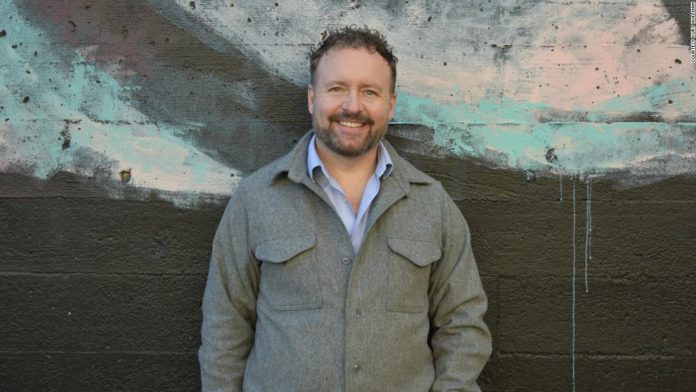“It’s a catch-22,” said Rick Schmutzler, founder of GYM Sportsbar, with locations in New York, Los Angeles and Fort Lauderdale.
At issue is a key rule that says in order for a PPP loan to be forgiven, a small business owner must spend at least 75% of it on payroll expenses in the first eight weeks of the loan. The remaining 25% may be spent on mortgage interest, rent, utilities and interest on other business-related debt obligations.
That means for businesses that had to shutter and let employees go, they must rehire their workers — many of whom just started receiving unemployment benefits — and pay them for eight weeks even though there is no work for them to do. Then one of two things will happen: the business won’t be allowed to reopen yet and its employees will have to go back on unemployment; or the business may reopen, but have a hard time paying employees because it’s unlikely to turn a profit quickly.
If the business doesn’t spend the money according to the rules, they must pay back whatever portion of the loan isn’t forgiven at a 1% interest rate over two years.
Schmutzler expects that when his three bars reopen, they’ll be operating at a loss for months because most states likely won’t let restaurants and bars operate at full capacity, he says, and a lot of patrons initially may be too afraid to come.
Currently, he is using some of his PPP loan money to pay those employees who have not gotten unemployment benefits or any other financial relief yet. As for the rest of the loan, he’s trying to figure out the best ways to spend it to give his business — and by extension his staff — a chance to survive. Beyond payroll expenses, Schutzler also may use some of the money to pay for antibody testing for staff.
“If I have to pay back half the loan, well, then I’ll pay it back,” he said. “But I’m not going to do something that is dumb for the business.”
Kurt Huffman, who owns the restaurant group ChefStable in Oregon, sees the PPP loan as a welcome lifeline but says the eight-week window to qualify for forgiveness is much too tight for restaurants. So rather than spending his loans now when his restaurants are closed and his employees are making more on unemployment, he’s decided instead to use most of the money to help support payroll for the first six to 18 months after his restaurants reopen. But that decision means he’ll have to pay back whatever portion of the loan he doesn’t spend in the first eight weeks, plus interest.
“We’d rather survive and live to fight another day, even if eventually we owe the government some money,” Huffman said.
Those in other industries worry, too. Walter Rowen, who owns the glass decorating company Susquehanna Glass in Columbia, Pennsylvania, says he may not be able to reopen until early June, at which point he’ll already be nearing the end of his eight-week period.
“They are giving me money to let me bring employees back on payroll, but limiting the time frame I can do that in. Nobody thought that through,” Rowen said.
Lisa Ashton had the same problem. She received a PPP loan for her business, Northern Lights Holistic, a wellness center in Portsmouth, Rhode Island. But she quickly realized she wouldn’t be able to spend it in eight weeks, especially since her business won’t be allowed to open before June 1. She called her bank and asked to give the money back.
“I told them the situation and I told them that it’s going to be too much money for me to spend,” Ashton said. Her bank agreed to take half back — and she can now pay her 16 freelancers and rent through July 1, without accruing loan debt. “I won’t have to worry about the interest or everything accumulating … and being stuck with that payment. So I feel really good about that.”
But many business owners won’t have that luxury. They will have to pay back the portion of their loan that they didn’t spend in accordance with program’s forgiveness rules. And the new debt will worsen their debt-to-income ratio, which may hurt their chances of getting other financing, according to Greg Ott, CEO of Nav, an online platform for small businesses seeking lenders and credit cards.
Will Washington help?
Small business owners hope lawmakers extend the eight-week time frame or lower the percentage of the loan that must be used for payroll.
It’s unclear whether either will happen. But a new report from the inspector general overseeing the Small Business Administration recommends that the SBA review its 75/25 rule for divvying up how the money must be spent. The IG noted that the law that created the program does not create any such restriction.
Jaret Seiberg, an analyst at Cowen Washington Research Group, thinks there’s a fair chance Washington will relax the 75/25 rule and may even extend the eight weeks.
“The Paycheck program is underperforming because Treasury unilaterally required that 75% of the funds be used for payroll within eight weeks of receiving the loan,” Seiberg wrote in a note to clients. “The frustration in Washington is that Treasury could unilaterally fix the problems tomorrow because it created them. … If Treasury won’t fix Paycheck, expect Congress to change the terms in the next stimulus.”
Source : CNN














